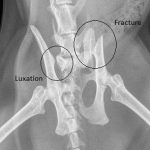
Protection of companion animals
EUROPEAN CONVENTION ON THE PROTECTION OF ANIMALS Strasbourg, 13.11.1987r.
The undersigned member states of the Council of Europe;
– Realizing that the aim of the Council of Europe is to achieve greater unity among its member states;
– Recognizing the moral obligation of human beings to respect all living creatures and remembering that companion animals have a special relationship with humans
– Considering the importance of companion animals and their impact on the value of human existence and their important role in society;
– Considering the problems arising from the great diversity of animals that are kept by man;
– taking into account the risks to hygiene, health and safety of humans and other animals that are immanently associated with an overpopulation of companion animals;
– Recognizing that the keeping of wild animal species as companion animals should not occur;
– Aware that there are various conditions affecting the acquisition, maintenance, commercial or non-commercial breeding, disposal and trade of companion animals;
– Aware that companion animals are not always kept in conditions that enable them to maintain their health and well-being;
– noting that attitudes toward companion animals can change significantly depending on one’s knowledge; — given that the basic average attitude toward an animal and the everyday practice that results in responsible ownership of a companion animal is not only a desirable but a realistic goal;
– have decided as follows:
CHAPTER I – GENERAL CONDITIONS ^
1. An assistance animal is defined as any animal that is kept, or is intended to be acquired in the future, by humans and kept in their immediate domestic environment for their pleasure and companionship.
2. Trade in companion animals means any legal transaction carried out for the purpose of obtaining profit which involves a change of ownership of a companion animal.
3. Commercial breeding means breeding for commercial purposes. An animal shelter (reserve) is a non-commercial institution where companion animals can be kept in significant numbers.
4. If the legislation of a country or other administrative measures permit, the above body may take in stray animals.
5. By a stray animal is meant an assistance animal which either has no home or is out of the reach of its owner and is not under the direct control of any owner or keeper.
6. Competent authority shall mean an authority designated by the Member States of the Council of Europe.
Article 2 – Scope and implementation 1. Each Party shall take the necessary steps to implement the terms of this Convention with regard to:
(a) Companion animals kept by man or another legal person in homes, commercial establishments, commercial breeding and animal shelters;
(b) stray animals.
2. None of the articles of this Convention should affect the implementation of other instruments relating to the protection of animals or the conservation of species threatened with extinction.
3. Nothing in this Convention should affect the freedom of Parties to impose stricter measures for the care of companion animals or to apply the conditions of this Convention to other categories of animals not mentioned in this document.
CHAPTER II RULES FOR KEEPING COMPANION ANIMALS ^
Article 3 – Basic principles aimed at the welfare of the animal
1. No one should cause unnecessary pain, suffering or stress to an assistance animal.
2. No one should abandon an assistance animal.
Article 4 – Possession
1. Any person who has an assistance animal and agrees to look after it is responsible for its health and welfare.
2. Any person who owns or cares for a companion animal shall provide it with accommodation, care and attention, taking care also of the ethological needs of the animal consistent with its breed and breeding, and in particular
(a) provide adequate and sufficient food and water;
b) provide it with suitable conditions for exercise;
(c) take all necessary measures to prevent its escape;
3. An animal should not be kept as an assistance animal if:
— the conditions of paragraph 2 are not fulfilled;
— despite meeting these conditions, the animal cannot adapt to life in captivity.
Article 5 – Breeding Any person who chooses an assistance animal and plans to breed it is responsible for taking into account the anatomical, physiological and behavioural conditions of the animal , which may put at risk the health or welfare of the litter or the female partner. Article 6 – Age limit for the acquisition of
No companion animal shall be sold to a person under 16 years of age without the consent of the parents or legal guardian.
Article 7 – Training
No companion animal should be trained in a way that may be detrimental to its health, especially forcing it to exceed its natural capacity, strength or using synthetic specifications that may lead to injury, unnecessary pain, suffering or stress.
Article 8 – Trade, breeding, shelter of animals
Any person who, at the time this Convention enters into force, is engaged in the trade, commercial breeding or keeping of animals shall, within a reasonable time determined by each Party, report his activities to the competent authority. Any person intending to engage in any of the above mentioned activities should declare his willingness to do so to the competent authority.
This declaration should specify:
(a) the species of companion animal to be used;
(b) the responsible person and his/her knowledge;
(c) a description of the premises and the equipment to be used.
The above activities may be performed only if:
(a) the person responsible has the knowledge and ability required to carry out the activity in question, acquired either by appropriate education or by experience of working with companion animals and
(b) if the premises and equipment used for the activity comply with the requirements of Article 4.
4. The relevant authority should decide on the basis of a declaration whether the conditions mentioned in paragraph 3 are fulfilled. If not, that authority should recommend appropriate changes, and if necessary for the welfare of the animals should prohibit the commencement or continuation of the activity.
5. The competent authority shall, in accordance with State legislation, verify whether or not the above conditions are fulfilled.
^ Article 9 – Advertising, entertainment, exhibitions, competitions and similar events Companion animals should not be used in advertising, entertainment, exhibitions, competitions and other such events unless:
1. the organiser has created appropriate conditions for the assistance animals – in accordance with the requirements of Article 4, paragraph 2, and
2. the health and welfare of the animals are not compromised. No substance, treatment, or device shall be used to increase or decrease the natural capacity of an animal:
1. during the competitions,
2. or in any other situation where the health or welfare of the animal may be jeopardised.
Article 10 – Surgical operations
Surgical operations to change the appearance of the animal for other than therapeutic purposes should be prohibited, especially:
(a) tail docking,
(b) the cropping of ears,
(c) removal of claws
(d) removal of tusks.
Exceptions to these prohibitions are allowed only if:
(a) the veterinarian considers non-treatment procedures to be necessary from a veterinary medical point of view or for the welfare of the animal;
(b) preventing reproduction.
1. Operations during which the animal may experience severe pain should be performed under anesthesia applied only by or under the control of a veterinarian.
2. surgeries where anaesthesia is not necessary can be carried out by people licensed to do so under state legislation.
Article 11 – Killing
Only a veterinarian or other competent person may put a companion animal to death, except in emergency situations in which the animal’s suffering cannot be terminated quickly by a veterinarian or other competent person or in other emergency situations specified in state legislation. Killing should be done with a minimum of physical and mental suffering. Methods, except in emergency situations, should be as follows:
(a) causing immediate unconsciousness and death, or
b) commencing with a deep anaesthetic followed by an action that contributes to the certain death of the animal. The person responsible for killing an animal should ensure that the animal is dead before disposing of the carcass The following methods of killing should be prohibited:
(a) drowning or other methods of strangulation where they do not meet the requirements set out in paragraph 1.b;
(b) the use of any poisonous substances or drugs if their dosage and application cannot be controlled so as to achieve the effect described in paragraph 1;
c) electric shock, unless it causes immediate unconsciousness.
CHAPTER III – ADDITIONAL MEASURES FOR STRAY DOGS
Article 12 – Reduction of quantities
If the Party considers the current number of stray animals to be too high and problematic, appropriate legislative and/or administrative measures should be taken to reduce the number of stray animals without causing unnecessary pain, suffering or stress.
(a) The above measures shall include the following requirements:
(b) and if animals are to be caught, this should happen with a minimum of stress and pain;
(c) and if captured animals are to be kept or killed, this must be done in accordance with the requirements of this Convention;
(d) Parties should consider:
— provide clear identification of the animal or cat by a method that ensures a minimum of pain and distress, e.g. tattooing and recording numbers in a register with the details and addresses of the owners;
— Reduce unplanned breeding of cats and dogs by promoting sterilization of these animals;
— Encourage those who find stray dogs or cats to report them to the appropriate authorities.
Article 13 – Exceptions to capture, possession and killing May be made only if unavoidable under national disease control programs.
CHAPTER IV – INFORMATION AND EDUCATION ^
Article 14 – Information and education programmes
Parties to the Convention undertake to support the development of information and education programmes to promote awareness and knowledge relating to the ownership, breeding, trade and training of companion animals consistent with the requirements of this Convention among organizations and individuals. In these programmes, particular attention should be paid to:
a) the need for companion animals to be trained for commercial or performance purposes only by a person with the appropriate knowledge and skills;
(b) the need to discourage:
— (a) giving companion animals as gifts to persons under the age of 16 without the prior consent of a parent or other legal guardian;
— giving companion animals as rewards or bonuses;
— unscheduled breeding of companion animals;
c) potential negative consequences for the health and welfare of wild animal species if they are acquired and kept as companion animals;
d) the risk of irresponsible purchases of companion animals, leading to an increase in the number of unwanted or abandoned animals.
CHAPTER V – MULTILATERAL CONSULTATIONS
Article 15 – Multilateral Consultations
1. The Parties undertake to hold multilateral consultations within the Council of Europe (during the first five years after the entry into force of the Convention and in cases where more than half of the Member States so desire) to examine the implementation of the requirements of the Convention in practice and the possible need to supplement the requirements. The above consultations should take place at meetings organized by the Secretary General of the Council of Europe.
2. Each Party shall have the right to appoint a representative to participate in the above consultations. Any member State of the Council of Europe which is not a party to this Convention shall have the right to be represented at the consultation by an observer designated by that member State.
3. After the consultations, each Party shall report to the Committee of Ministers on the consultations held and on the operation of the Convention and, if they consider it necessary, proposals for the amendment of Articles 15 to 23 of the Convention.
4. The parties should outline the rules and procedures for the consultations.
CHAPTER VI – AMENDMENTS ^
Article 16 – Amendments
1. Any amendment to Articles 1 to 14 proposed by a Party or by the Committee of Ministers shall be brought before the Secretary General of the Council of Europe and further communicated to all member States of the Council of Europe, to any other Party, to any other State invited to accede to the Convention as required by Article 19.
2. Any amendment proposed in accordance with the requirements of the preceding paragraph shall be carefully examined and discussed in multilateral consultations not less than two months after the circulation of the text of the amendment by the Secretary-General. During the consultations, an amendment may be adopted by a 2/3 majority of the.
3. Twelve months after the adoption of an amendment during multilateral consultation, the amendment should enter into force, unless otherwise agreed by the Parties.
CHAPTER VII – FINAL CONDITIONS ^
Article 17 – Signature, ratification, approval This Convention shall be open for signature by the member States of the Council of Europe. Subject to ratification, approval and acceptance. The instruments of ratification, approval and endorsement shall be vested in the Secretary General of the Council of Europe.
Article 18 – Entry into force
1. This Convention shall enter into force on the first day of the month following the expiration of a period of six months after the date on which the first four Member States have decided to be bound by the requirements of the Convention in accordance with Article 17.
2. For other Member States which decide to accede to the Convention, this Convention shall enter into force six months after the deposit of the instruments of ratification, approval and acceptance.
Article 19 – Accession of non-member States of the Council of Europe
1. After the entry into force of the Convention, the Committee of Ministers of the Council of Europe may invite any State which is not a member of the Council of Europe to accede to the Convention, on the basis of a decision taken by the majority provided for in Article 20.d. By a vote of the Council of Europe’s Statute and by a secret ballot of the representatives of the member states entitled to sit on the Committee of Ministers.
2. As far as the acceding State is concerned, the Convention shall enter into force on the first day of the month following the end of a six-month period starting from the date of deposit with the Secretary-General of the Council of Europe of the instruments of accession.
Article 20 – Territorial clauses
1. Each Country may, at the time of signature or deposit of instruments of ratification, approval, acceptance or accession, specify the territory or territories within which this Convention shall have effect.
2. Each Party may, at a later date, by a declaration addressed to the Secretary-General of the Council of Europe, extend the application of this Convention to the territory mentioned in the declaration.
3. Each of the declarations described above can also be withdrawn by an appropriate note delivered to the Secretary General.
Article 21 – Reservations
1. Each Country may declare its willingness to exercise one or more reservations in respect of Articles 6 and 10, paragraph 1, sub-paragraph a. No other objections can be made.
2. A Party which has made a reservation in accordance with the above paragraph may withdraw it by notifying the Secretary-General of the Council of Europe.
Article 22 – Condemnation
Each Party may condemn this Convention by appropriate notification to the Secretary General of.
Article 23 – Notifications
The Secretary General of the Council of Europe shall notify the member states of the Council of Europe and other states which have acceded to the Convention or have been invited to do so, of:
(a) signing;
(b) deposit of instruments of ratification, approval, endorsement, or accession;
(c) the date of entry into force of this Convention in accordance with Articles 18, 19 and 20;
(d) any other act, notification or communication related to this Convention









